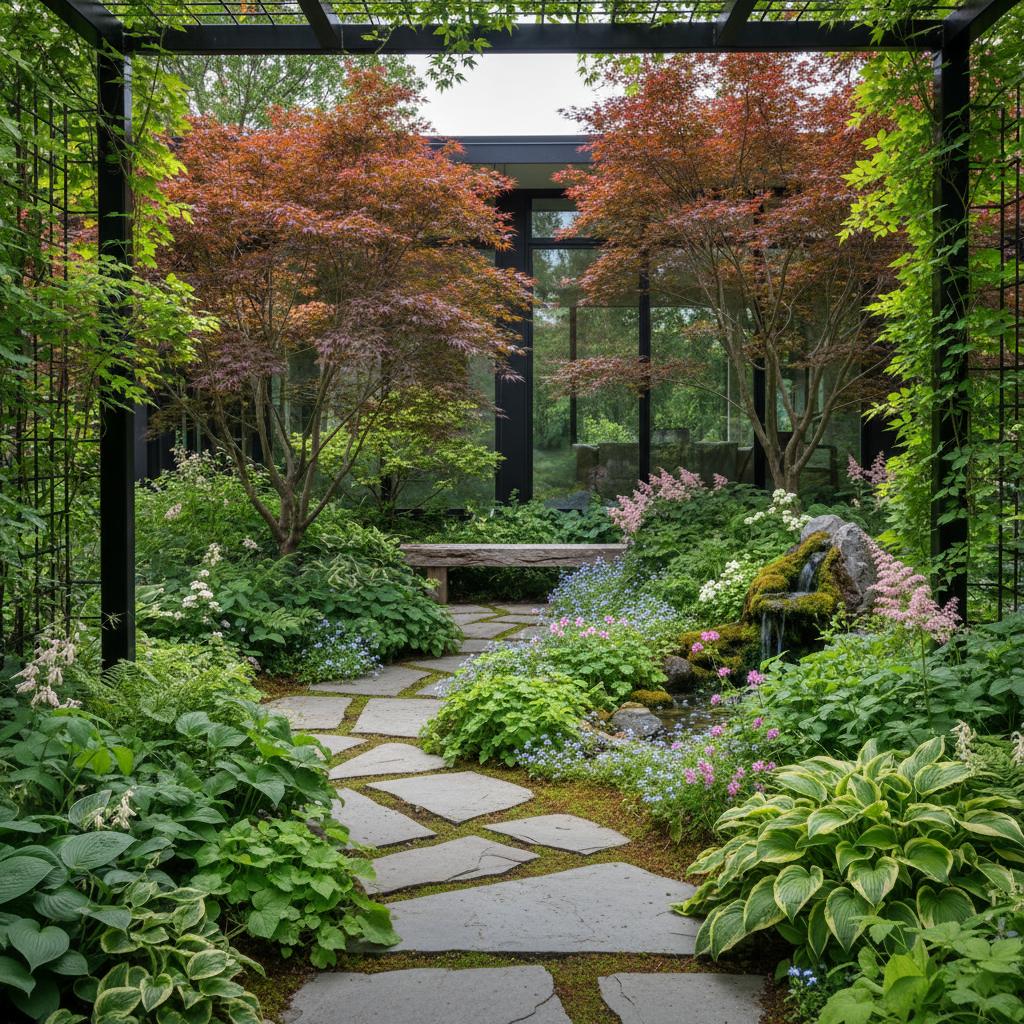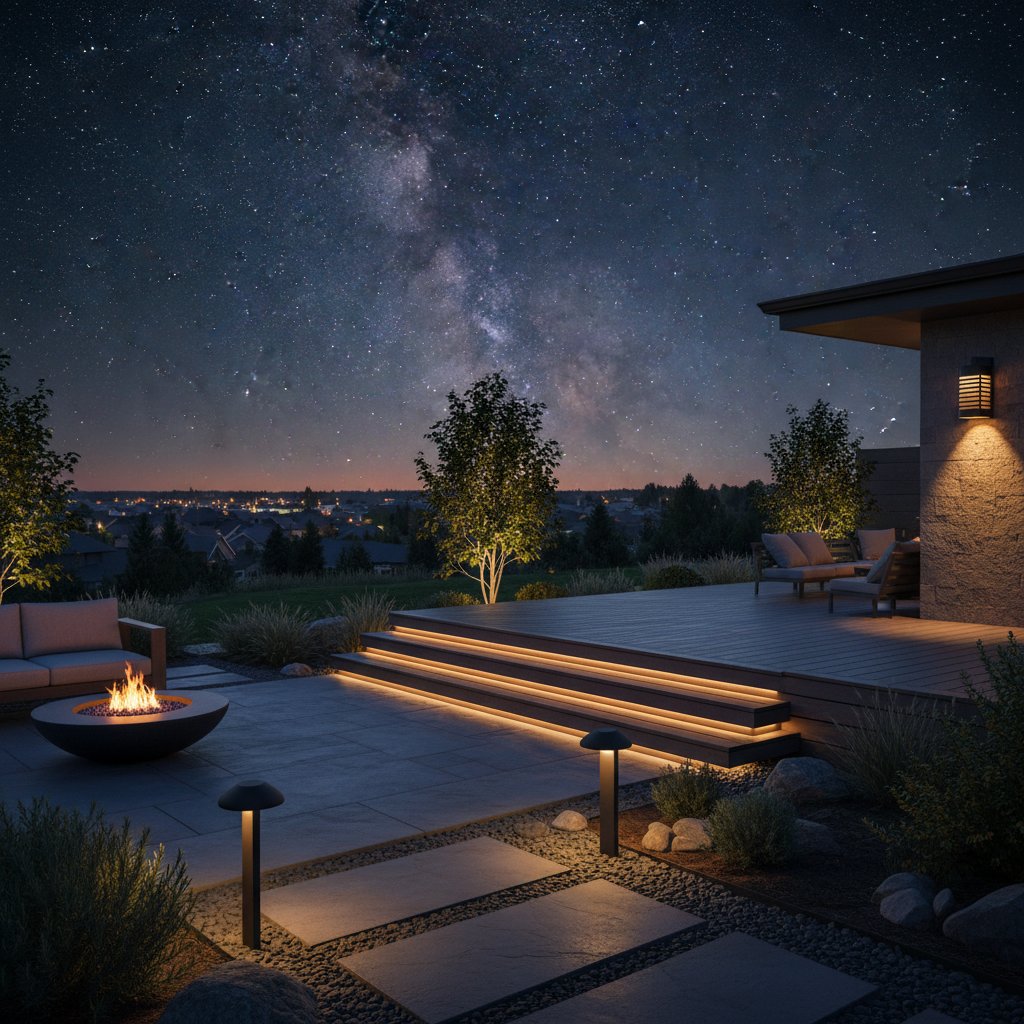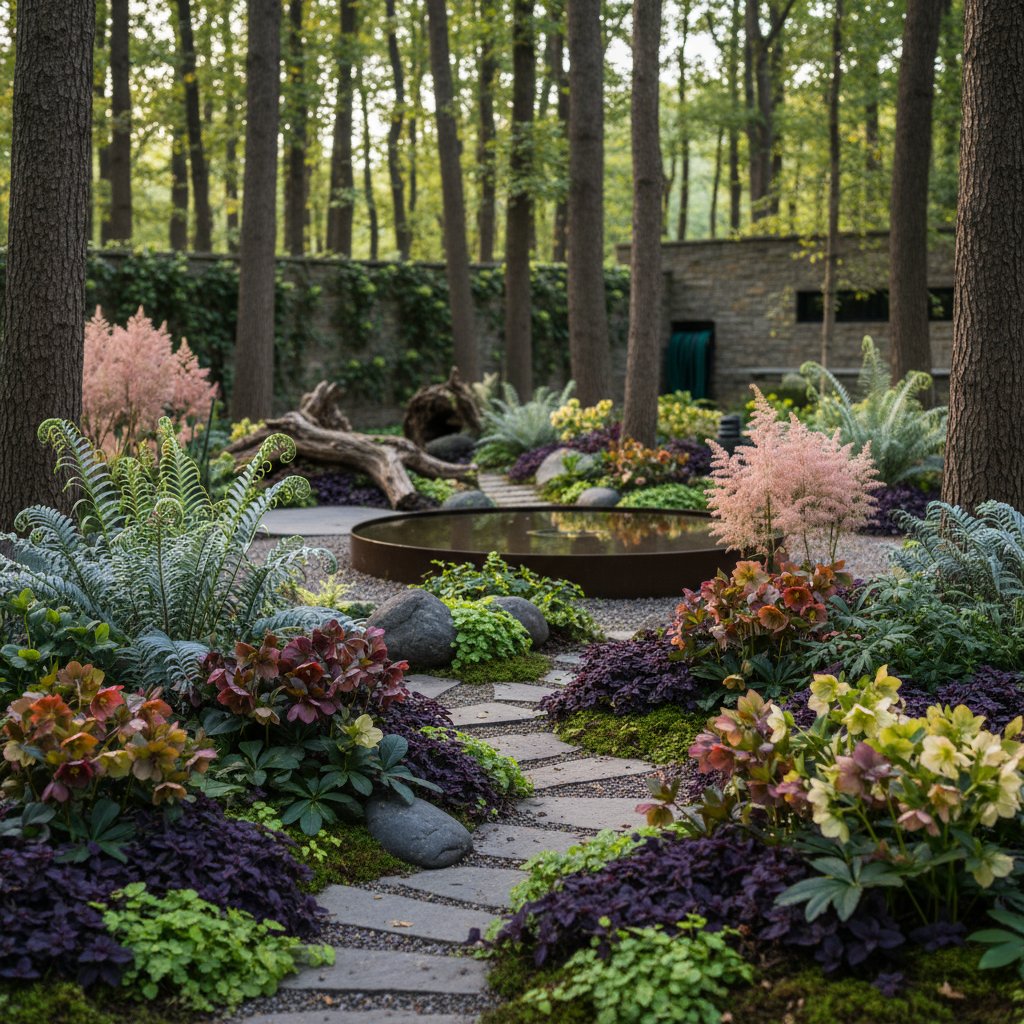The Rise of Shade Gardens
Shade gardens gain prominence as homeowners shift toward sustainable and low-effort landscapes. Areas once overlooked due to limited sunlight now serve as inviting retreats that support a wide array of plants. These gardens offer a serene environment, particularly beneficial under mature trees, along fences, or in north-facing yards.
The appeal lies in their ability to thrive with minimal resources. Shaded spaces retain moisture longer, reducing irrigation needs by up to 50 percent compared to sun-drenched beds. This efficiency aligns with broader trends in water conservation and simplified yard care.
Identifying Shade Variations
Shade levels vary significantly, influencing plant selection and garden success. Recognize these distinctions to match species with your site's conditions. Three primary categories guide this process.
- Light shade: Characterized by brief exposure to morning or late afternoon sun, often softened by overhead foliage or buildings.
- Partial shade: Involves roughly equal periods of sun and shadow throughout the day.
- Deep shade: Features minimal direct light, typical beneath thick canopies or near tall structures.
Observe your yard systematically. Visit at morning, midday, and evening to map light patterns. Such assessment ensures optimal placement; for instance, position ferns and hostas in deep shade zones, while astilbes and hydrangeas suit partial areas better.
Selecting Suitable Plants
Shade gardens emphasize foliage diversity and texture over floral displays. Thoughtful choices yield year-round interest without excessive demands. Focus on species adapted to cool, moist conditions.
Perennials for Deep Shade
- Hosta varieties: Available in numerous forms, these feature leaves ranging from variegated green to nearly black, growing 6 inches to 3 feet tall.
- Ferns, such as ostrich or cinnamon types: Deliver feathery fronds that enhance humidity-loving environments.
- Lungwort (Pulmonaria): Displays silver-spotted foliage alongside clusters of blue or pink blooms in early spring.
- Wild ginger (Asarum): Spreads via rhizomes to form weed-suppressing carpets, maintaining evergreen appeal in temperate climates.
Options for Partial Shade
- Astilbe: Produces airy flower spikes in shades of pink, red, and white, reaching 1 to 3 feet in height.
- Hydrangeas, including mophead cultivars: Form rounded blooms up to 8 inches across, preferring acidic soil with consistent moisture.
- Coral bells (Heuchera): Offer ruffled leaves in colors from purple to caramel, with tiny bell-shaped flowers on wiry stems.
- Japanese forest grass (Hakonechloa): Cascades in golden or green hues, adding gentle motion in breezy spots.
Shrubs and Compact Trees
- Dogwood (Cornus species): Delivers white bracts in spring and crimson twigs for winter color, tolerant of dry shade once established.
- Camellia: Maintains glossy evergreen leaves with rose-like flowers from fall to spring.
- Rhododendrons and azaleas: Provide evergreen or deciduous forms with vibrant trusses of blooms, requiring well-drained, humus-rich soil.
Group plants by shared requirements, such as soil pH and watering frequency. This approach minimizes adjustments and promotes healthy growth across the garden.
Budget and Effort Considerations
Establishing a shade garden proves cost-effective with planning. Expenses vary by scale, but initial investments yield long-term savings. Break down typical costs for clarity.
- Plants: Perennials range from $5 to $20 each for nursery pots; shrubs and small trees fall between $30 and $100.
- Soil amendments and mulch: One cubic yard of compost or shredded bark costs $30 to $60, covering approximately 100 square feet at 2-inch depth.
- Hardscape elements: Gravel paths or stone pavers add $50 to $200, scalable to the area's size.
Self-installation limits outlays to materials and plants, completable over one to two weekends for spaces under 500 square feet. Professional services increase totals by 50 to 100 percent due to labor. Post-establishment, tasks involve annual mulching, leaf removal, and selective pruning, requiring only a few hours seasonally.
Creating a Seamless Design
Effective shade gardens integrate harmoniously with the landscape. Employ organic curves for beds to mimic natural contours. Arrange plants in tiers, placing taller specimens at the rear and low-growers at the forefront.
Prioritize textural contrasts for visual depth. Combine broad hosta leaves with lacy ferns or arching grasses. Introduce color variation through foliage, blending deep emeralds with lime greens or silvers to sustain vibrancy.
Incorporate functional accents sparingly. Position a wooden bench amid ferns for contemplation, or add a shallow birdbath to attract wildlife. For pathways, select flat stones set in moss to maintain the tranquil vibe.
Subtle illumination elevates evening use. Install solar-powered stake lights along edges to accentuate leaf patterns without overpowering the calm. Steer clear of bright floods that disrupt the soothing ambiance.
Addressing Potential Issues
Shade gardens encounter specific hurdles, yet proactive measures resolve them efficiently. Anticipate and mitigate to ensure robust performance.
- Thinning vegetation: Enhance growth by increasing light penetration through selective pruning and annual compost applications to boost soil fertility.
- Pest management for slugs and snails: Deter them with barriers like diatomaceous earth or beer traps placed near bases of tender plants.
- Competition from tree roots: Opt for drought-tolerant, shallow-rooted options and irrigate deeply weekly during dry spells to sustain moisture.
- Excessive moss growth: Promote airflow by thinning overhead branches and moderating watering to prevent waterlogging.
Regular monitoring prevents escalation. Adjust based on seasonal observations for a resilient garden.
Nurturing Long-Term Success
A shade garden evolves gradually into a self-sustaining haven. Plants establish roots within the first year, then expand to form dense, layered canopies. Soil quality enhances through fallen debris, fostering a balanced ecosystem.
Monitor expansion in early years. Divide vigorous spreaders like hostas or ferns every three to five years using a sharp spade in spring or fall. This practice refreshes the design and provides divisions for new plantings.
Over time, these gardens demand far less intervention than sunny counterparts. They conserve water, lower cooling costs for adjacent structures, and boost local biodiversity, delivering ongoing rewards with grace.



